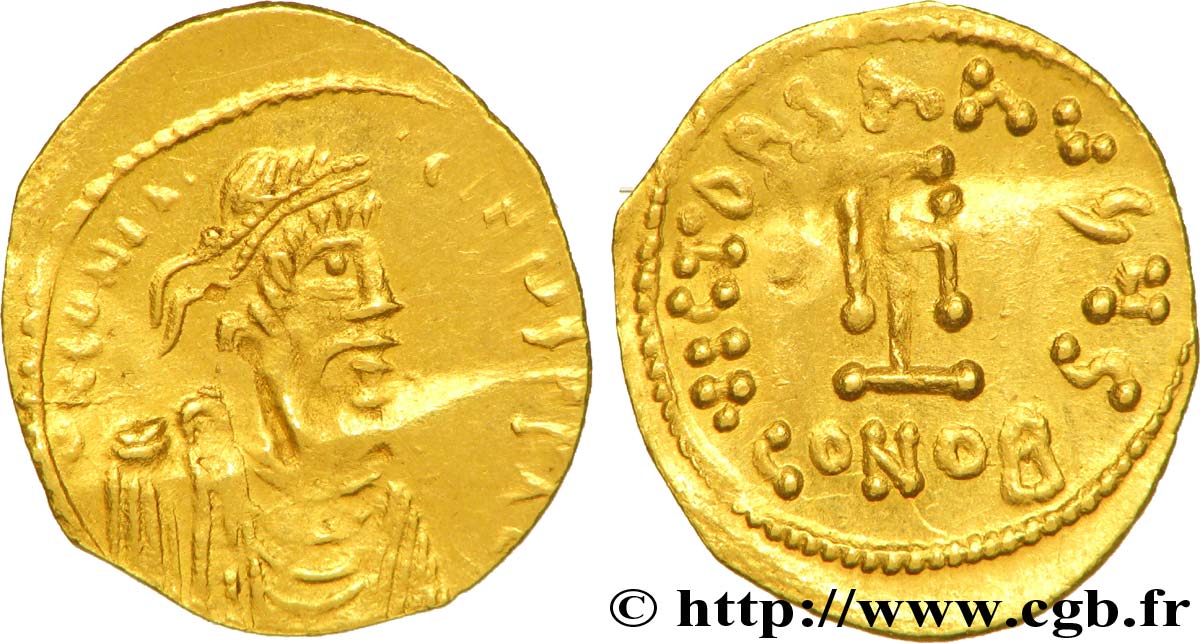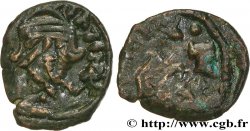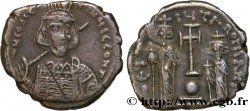v45_0889 - CONSTANTINE IV, HERACLIUS and TIBERIUS Tremissis
MONNAIES 45 (2010)
Starting price : 280.00 €
Estimate : 450.00 €
Realised price : 375.00 €
Number of bids : 3
Maximum bid : 410.00 €
Starting price : 280.00 €
Estimate : 450.00 €
Realised price : 375.00 €
Number of bids : 3
Maximum bid : 410.00 €
Type : Tremissis
Date: c. 668-685
Mint name / Town : Syracusa
Metal : gold
Millesimal fineness : 1000 ‰
Diameter : 18 mm
Orientation dies : 6 h.
Weight : 1,41 g.
Rarity : R1
Coments on the condition:
Exemplaire de qualité exceptionnelle pour ce type monétaire sur un flan très large, ovale, légèrement décentré au droit sur le buste. Portrait de toute beauté. Revers de style fin. Petite trace de pliure perceptible. Conserve la plus grande partie de son brillant de frappe et de son coupant d’origine
Obverse
Obverse legend : D N CONSTAN-TIYS P P A.
Obverse description : Buste diadémé et cuirassé de Constantin IV à droite, vu de trois quarts en avant (A’a) ; diadème perlé.
Obverse translation : “Dominus Noster Constantinus Perpetuus Augustus”, (Notre seigneur Constantin perpetuel auguste).
Reverse
Reverse legend : VICTORIA - AVGYS// CONOB.
Reverse description : Croix potencée.
Reverse translation : “Victoria Augustorum”, (La Victoire des augustes.
Commentary
Souvent ce type de tremissis de Constantin IV est confondu avec celui de son père, Constans II. Il n’est normalement pas daté et ne peut être situé chronologiquement avec précision. En fait, il semble plus rare que celui de son prédécesseur.








 Report a mistake
Report a mistake Print the page
Print the page Share my selection
Share my selection Ask a question
Ask a question Consign / sell
Consign / sell
 Full data
Full data
